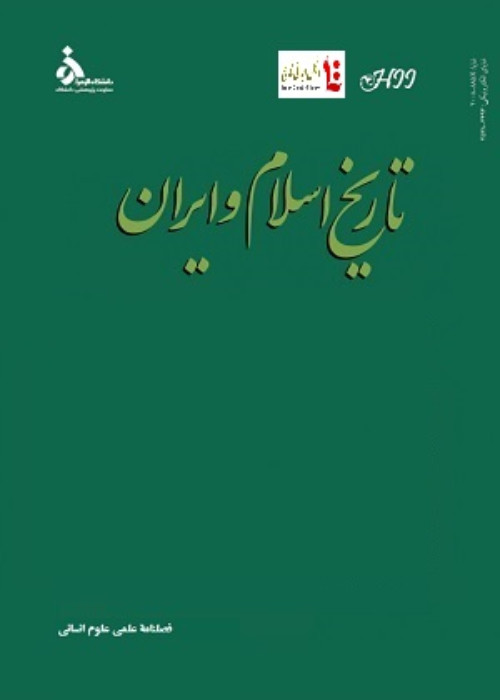Introducing, reviewing, and dating the new inscription in the historical context of Yazd city
Author(s):
Article Type:
Research/Original Article (دارای رتبه معتبر)
Abstract:
The ideas and dates used in the inscriptions of historical monuments provide important clues about the history of construction and the political and administrative climate of the time. The inscription of Shaarbafi workshop dated 921 AD located in the ancient "Shah Abul Qasim" area of Yazd, is one of the most interesting examples in this field. Further study of the inscriptions and the designs that adorn them has naturally revealed that the date recorded does not correspond to the time when the inscription was executed. Therefore, the following essay will attempt to resolve the ambiguities and determine the exact nature of the inscriptions and using a historical-analytical method. The following are the main questions of current research: 1. Why is the recognized inscription not from the Safavid period? 2. To which epoch should the inscription be assigned on the basis of the data now available? The gap between the two frames is bordered with plant motifs, and this text is decorated with geometric, plant, animal and human motifs. The subjects of the inscriptions listed include words from the Quran, supplications, Arabic phrases, and Persian songs such as the well-known work of Mohtasham Kashani. Khursheed khanom (sun pattern) plays a role in two of them. The results of the study show that the function of khursheed khanom (sun pattern) and the way it is played, including curly hairstyles, continuous eyebrows, and large eyes, can be effectively compared with examples from the Qajar era. Moreover, Mohtsham Kashani, one of Shah Tahmasb's court poets, probably wrote his famous song at this time. The framing of the above inscription is comparable to that of the Malikzadeh house of the Qajar period or that of Hosseinieh Nazim al-Tojjar in Yazd. The added date can be considered unreliable for the reasons mentioned above, and it can be assumed that the inscription in question is from the Qajar period.
Keywords:
Language:
Persian
Published:
History of Islam and Iran, Volume:32 Issue: 55, 2022
Pages:
157 to 179
magiran.com/p2569170
دانلود و مطالعه متن این مقاله با یکی از روشهای زیر امکان پذیر است:
اشتراک شخصی
با عضویت و پرداخت آنلاین حق اشتراک یکساله به مبلغ 1,390,000ريال میتوانید 70 عنوان مطلب دانلود کنید!
اشتراک سازمانی
به کتابخانه دانشگاه یا محل کار خود پیشنهاد کنید تا اشتراک سازمانی این پایگاه را برای دسترسی نامحدود همه کاربران به متن مطالب تهیه نمایند!
توجه!
- حق عضویت دریافتی صرف حمایت از نشریات عضو و نگهداری، تکمیل و توسعه مگیران میشود.
- پرداخت حق اشتراک و دانلود مقالات اجازه بازنشر آن در سایر رسانههای چاپی و دیجیتال را به کاربر نمیدهد.
In order to view content subscription is required
Personal subscription
Subscribe magiran.com for 70 € euros via PayPal and download 70 articles during a year.
Organization subscription
Please contact us to subscribe your university or library for unlimited access!


